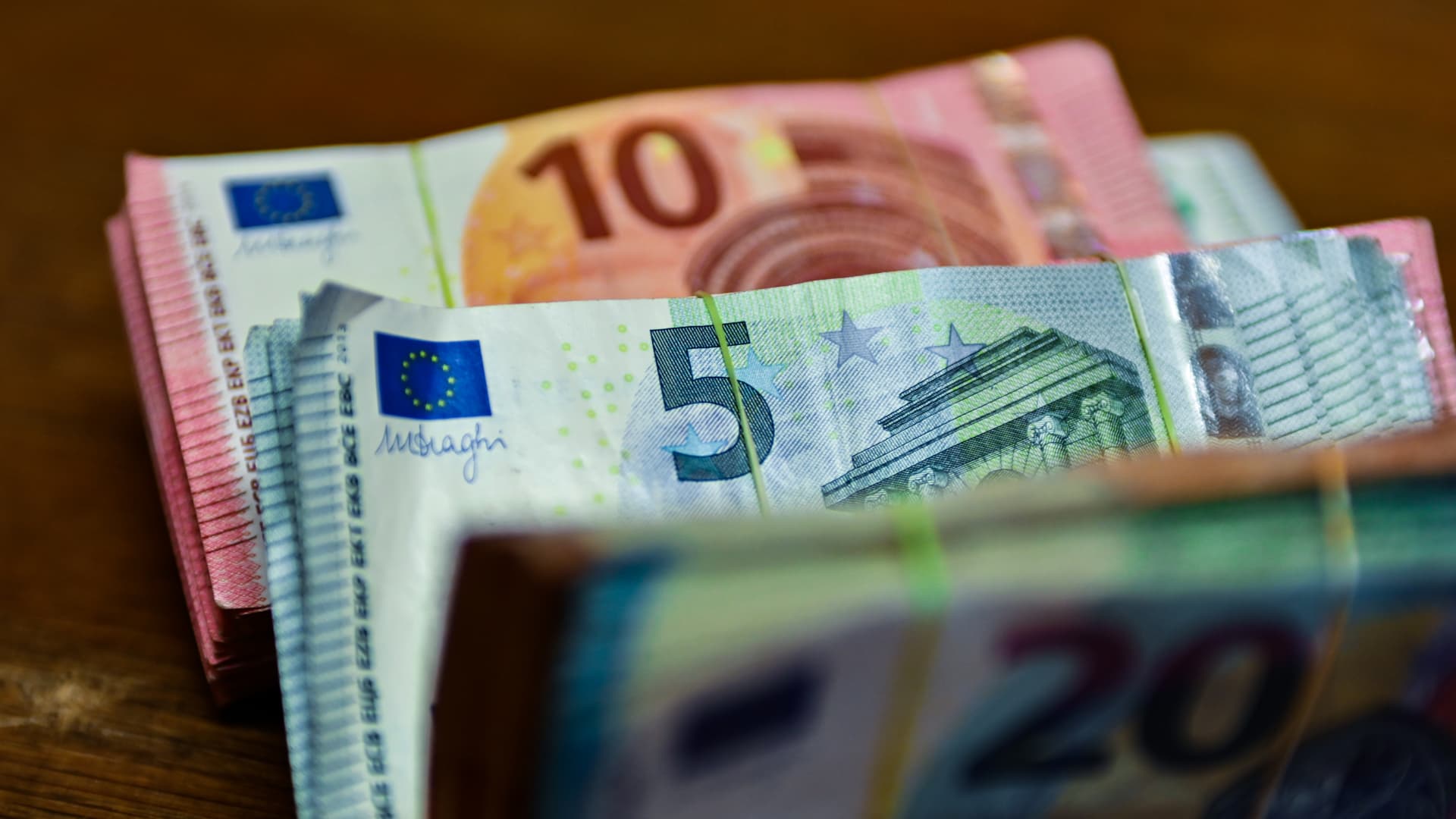10 and 5 euro notes.
Adrien Fillon | Nurphoto | Getty Images
The euro has fallen below $0.99 for the first time in 20 years after Russia said it would shut off its main gas supply pipeline to Europe indefinitely.
The euro was hovering just below the 0.99 level as European markets opened Monday, trading at 0.9893 versus the dollar shortly after 8:00 a.m. London time (3:00 a.m. ET). Earlier in the morning, it hit lows of around $0.9881.
The dollar index, which measures the greenback against six major currencies, also breached a fresh two-decade high as the British pound slid on fears over energy supply and European economic growth.
On Friday, Russian energy supplier Gazprom said it would not resume its supply of natural gas to Germany through the key Nord Stream 1 pipeline, blaming a malfunctioning turbine.
The announcement was made hours after the Group of Seven economic powers agreed on a plan to implement a price cap on Russian oil.
It comes ahead of a meeting of the European Central Bank Thursday, when economists expect it to raise its benchmark deposit rate from 0 to 0.5% or 0.75% against a backdrop of concern over Europe’s ability to meet its energy needs this winter and the potential for a hit to growth.
“We expect that Russia is respecting the contracts that they have, but even if the weaponization of energy will continue or will increase in response to our decisions, I think that the European Union is ready to react,” Paolo Gentiloni, the EU’s economics commissioner, told CNBC over the weekend.
“Of course, we have to save energy, we have to share energy, we have [a] high level of storage and we are not afraid of Putin’s decisions.”
Viraj Patel, global macro strategist at investment advisory Vanda Research, said many investors were seeking to short the euro and European government bonds, which have seen a spike in yields over the last month on the expectation of interest rate rises.
“These markets are selling off on any bad news related to the Russia gas flows narrative, whilst reluctant to rally on any marginal improvement in the energy crisis,” Patel told CNBC by email.
However, Patel added that bad news could start to be good news for underowned European assets.
“The market is under-appreciating the chance for policy intervention from government officials helping to reduce stagflation risks on the continent,” he said, meaning the case for a euro rise to 1.05 against the dollar now looked equal to, if not greater, than the case for a fall to 0.95.
Yesterday the German government announced a €65 billion package to reduce consumer energy bills and support businesses.
Meanwhile, the pound was trading at 1.1465 against the dollar as the U.K. prepares to find out who its new British prime minister will be. The new premier will be forced to reckon with a growing cost-of-living crisis fueled by soaring energy bills.
Sterling fell 4.5% against the dollar in August, its worst month since Brexit, and one analyst forecast that it would “plumb new depths” due to political and economic uncertainty, potentially hitting $1.05 by the middle of next year.
Image and article originally from www.cnbc.com. Read the original article here.

